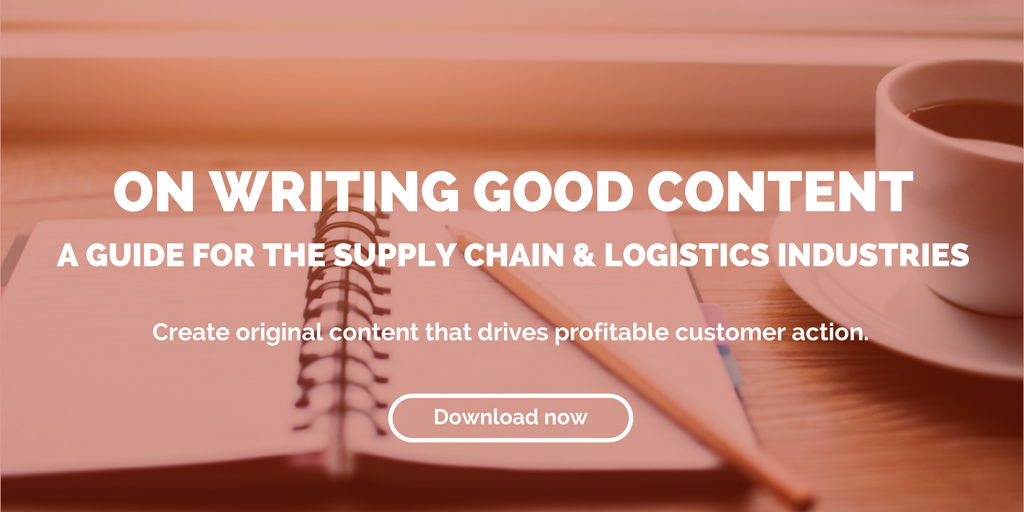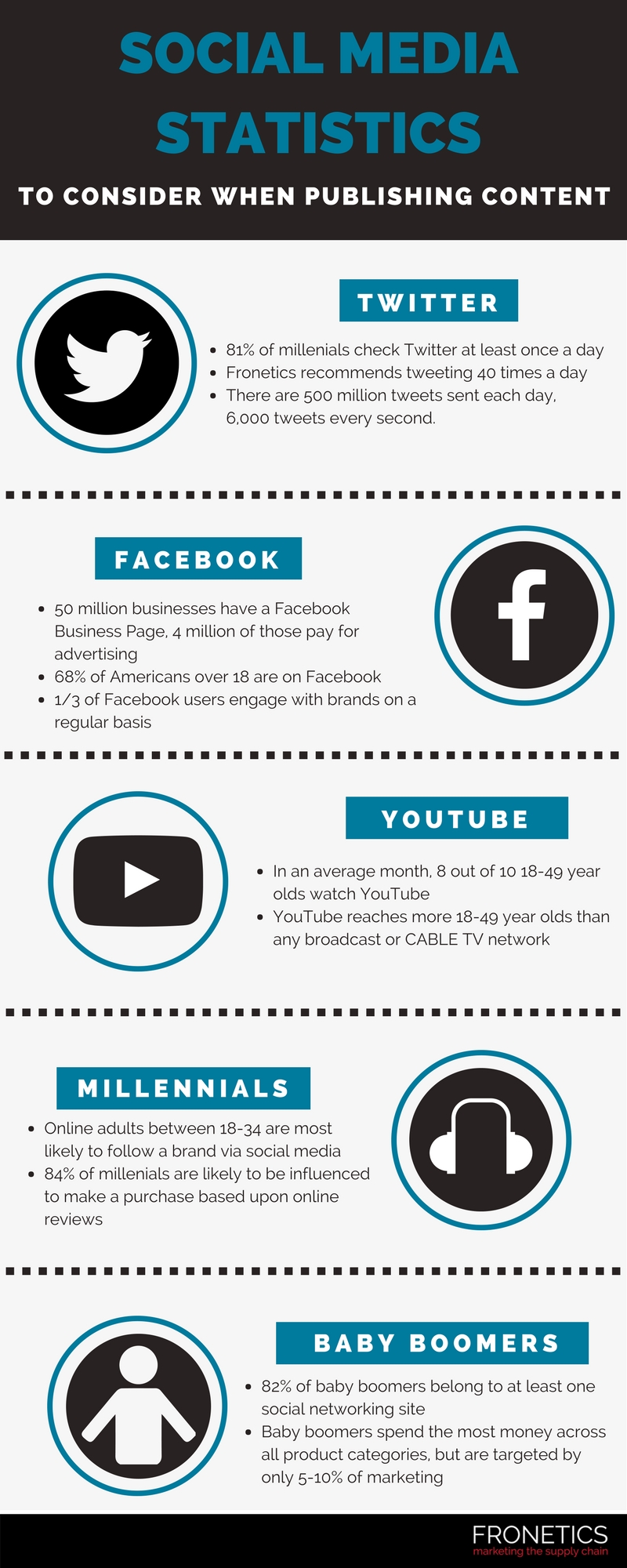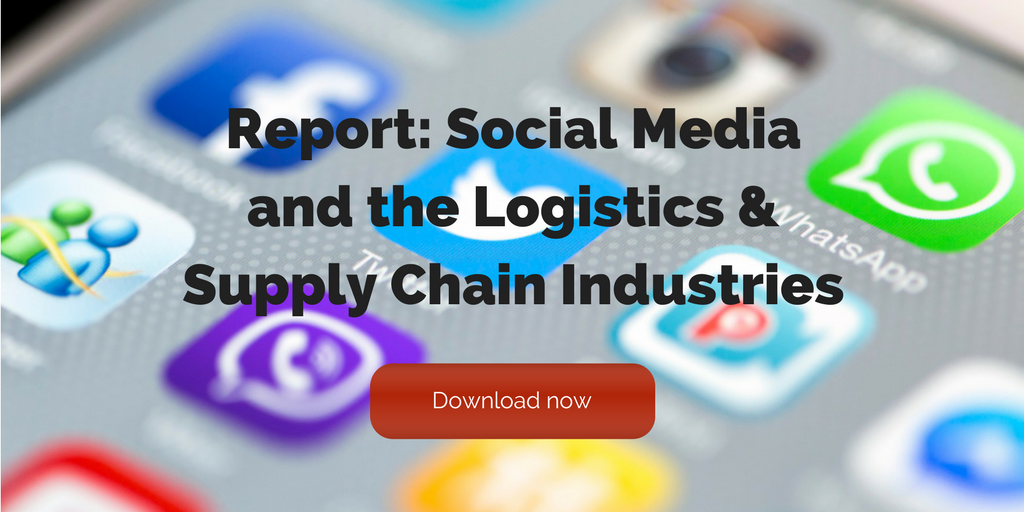
by Fronetics | Feb 21, 2018 | Blog, Content Marketing, Logistics, Marketing, Supply Chain
These 5 steps will help you identify topic clusters for your business that improve your search engine visibility and drive traffic to your website.
As search engines adjust their algorithms to be more sophisticated, marketers have the opportunity to structure content strategically to optimize website search rankings. We’ve written in detail about this new reality in our writing for SEO series.
One of the best ways to strategically structure your content is with the topic cluster model, in which broad cornerstone content is contained on pillar pages, and related subtopics are contained in cluster content. Each grouping of subtopics and corresponding pillar page is called a topic cluster.
Learn more about topic clusters and pillar content here.
What is a topic cluster?
This structure is intended to build authority and influence for your business in the eyes of search engines and visitors. Effectively using a topic cluster structure is the best way to drive relevant traffic to your website.
First you need to identify your pillar content. HubSpot’s Leslie Ye sums up her philosophy of choosing pillar content, saying, “Ask yourself this: would this page answer every question the reader who searched X keyword had, AND is it broad enough to be an umbrella for 20-30 posts?”
The key takeaway here is that your core topics need to be broad enough to encompass a fair amount of content, narrow enough to allow you to fully address the topic with your content, and, most importantly, they need to be in an area of expertise for your business.
So how do you identify topic clusters strategically? Below are five steps to get you started.
5 steps to identify topic clusters
1) Chart out five to ten primary issues that your target buyer persona faces. You can do this by running interviews, conducting surveys, and researching within online communities like Quora to gather your data.
2) Group each of the issues into broad topic areas.
3) Using keyword research, flesh out each of the core topics with subtopics.
4) Audit your historical content, and map it to align with each of the core topics and surrounding subtopics.
5) Assess where your content makes the strongest cases. Those are your core topics.
Related posts:


by Fronetics | Feb 13, 2018 | Blog, Content Marketing, Logistics, Marketing, Supply Chain
Here are three tips for writing pillar content that will help structure your posts, attract leads and gain better page rankings.
In case you missed our series on writing for SEO, pillar content is a highly effective way to define your brand, drive traffic, and convert website visitors to leads. But in order to be effective, these pages should be strategically designed to do their proper job in telling search engines what your site is all about.
Before we go further, let’s take a step back and talk about exactly what pillar content is. As search engines adjust their algorithms to favor topic-based content, savvy marketers are turning to topic clusters to structure their content.
“This method uses a single pillar page as the main hub of content for a given topic. All of your content assets related to that topic link back to the pillar page,” explains HubSpot blogger Amanda Zantal-Wiener.
Need some ideas for writing and structuring effective pillar content? Here are three tips to get you started.
3 tips for writing pillar content
1) Start thinking about your site differently.
Not so long ago, SEO optimization was all about keywords. But search engines are changing. As their algorithms get more sophisticated, they look for websites that can provide depth and breadth on a particular topic. That means topic-based content wins you better page rank. It’s time to start thinking about your site as a collection of topics rather than a collection of keywords.
2) Consider your core audience.
“Think about the top interests and challenges of your core audience personas to give you ideas for pillar page content,” says HubSpot blogger Sophia Bernazzani.
Good content marketing is all about cultivating your reputation as a trusted resource for your audience, and pillar pages are no exception. Chose topics that answer the needs of your target audience. Topics should be broad enough to be able to generate multiple related blog posts, but narrow enough that you can cover all related content on a single pillar page.
3) Your content is about answering questions.
“Pillar pages should answer any question or query a searcher might have about a topic — which will make them want to click on your pillar page when they enter a Google search term that your page ranks for,” writes Bernazzani. The goal is to draw site visitors with savvy pillar content, and let them explore all content in your topic cluster.
Related posts:


by Fronetics | Feb 8, 2018 | Blog, Content Marketing, Logistics, Marketing, Social Media, Strategy, Supply Chain
These social media statistics are important to keep in mind when planning out your content marketing strategy.
A strong social media presence is key to successful marketing in 2018. Social media is simply unavoidable these days.
So, you jumped on board and you’re posting and tweeting. You’re creating content. You’re learning about search engine optimization and how to improve your rankings. But you’re still not reaching the audiences you were hoping to attract. What’s going wrong?
When you are posting on social media could be as important as what you’re posting.
Timing is everything, and that statement especially holds true when it comes to posting content to social media. If you are sending out your message and nobody is there to see it, you are that proverbial tree falling in the forest; you did not make a sound. Your post had little to no impact.
So, even if you are putting in the time and effort to craft informative blog posts, tweets with just the right message, or Facebook posts that inspire more than just page likes, you still are not getting the most exposure you can out of social media.
We have done our homework when it comes to the best times to post on social media. And the truth is there is no “one size fits all” answer to when you should post. There are general guidelines that differ for each site. But in general, it’s important to keep your target audience in mind when deciding where and when to post.
Here are some social media statistics that you need to consider when deciding when to post your content.
Social media statistics your business needs to consider when publishing content

(Made with Canva)
Related posts:

SaveSave
SaveSave

by Fronetics | Jan 11, 2018 | Blog, Logistics, Supply Chain
Bookmark these must-follow supply chain and logistics blogs to keep up with the latest industry news and happenings.
What are your favorite supply chain and logistics blogs? Fronetics is currently conducting a survey to determine which blogs you think are the best going into 2018. Vote here!
But we also want to tell you about some of our favorite blogs that we follow.
These 10 blogs are all rich with industry news and the latest trends to keep you in the know. They cover a wide range of topics, from research to strategy, and feature some of the top thought leaders in the field.
10 must-follow supply chain and logistics blogs (in no particular order)
1. Supply Chain 24/7
The Supply Chain 24/7 blog is a top business resource for Transportation, Distribution, Logistics and Supply Chain professionals. Read this blog.
2. Women in Trucking
These two blogs focus on various issues facing women in the trucking industry. WIT President Ellen Voie writes about topics in employment, achievement, and driving change in the industry. The Women In Trucking blog features posts by truckers, mostly industry veteran Sandy Long, about everyday concerns and experiences facing female drivers and their families.
3. Supply Chain Brain
This portal for supply chain executives features original and aggregated content touching on multiple industries. Read this blog.
4. EBN Online
This blog features top industry leaders publishing on topics including electronics manufacturing, global supply chain, and management logistics. Read this blog. (P.S. Read our CEO Frank Cavallaro’s blog here.)
5. Supply Chain Matters
The blog of Bob Ferrari offers his expertise on all aspects of supply chain business processes and supporting information technology. Read this blog.
6. Supply Chain Management Review
This vast website includes trending articles on supply chain and logistics strategies developments, many written by university-level professors. Read this blog.
7. Supply Chain Digital
Supply Chain Digital is a forward-thinking digital community aimed at providing procurement & supply chain professionals with industry-leading news, analysis, features and reports about the world’s biggest supply chains. Read this blog.
8. Cerasis
The Cerasis blog covers industry trends, educates and explains rules and regulations, busts myths, and has awesome infographics. Our Creative Director, Elizabeth Hines, is a contributor here. Read this blog.
9. Logistics Viewpoint
This blog features think pieces from three leading supply chain and logistics analysts with the mission to provide clear and concise analyses of logistics trends, technologies and services. Read this blog.
10. Supply Chain Shaman
Lora Cecere’s blog focuses on “the use of enterprise applications to drive supply chain excellence.” Read this blog.
What supply chain and logistics blogs are you reading this year?
Related posts:


by Fronetics | Dec 12, 2017 | Blog, Content Marketing, Marketing
Our most-viewed content marketing posts indicate that marketers are seeking solutions to improve their content marketing programs.
Supply chain and logistics marketers are increasingly seeing the value of content marketing. It is the most cost-effective method to earn leads and sales because it takes into account the way modern B2B buyers are making purchasing decisions (evaluating content they find on the internet).
Looking at our most-viewed content marketing posts this year, I see a trend: marketers are looking for solutions to improve their content marketing programs. I am currently working on our content calendar for 2018, so if there is anything specific you would like to know about, please feel free to email me with suggestions!
Top 10 content marketing posts
1) 4 Ways to Measure Brand Awareness
Building brand awareness is one of the key benefits of content marketing, but it’s notoriously difficult to measure. These four metrics can indicate that you are successfully drawing the public’s attention to — and heightening their knowledge of — your business. That will ultimately generate leads that turn into sales, which is the end marketing objective. Read full post
2) How to Write Better Headlines for LinkedIn Content in 2017
A study of 2016’s most popular content on LinkedIn used data to measure the most popular headlines and topics. The results are really interesting and say a lot about what content resonates with the general LinkedIn community. Tis post summarizes the most popular headline phrases and the most impactful headline words and topics, and suggests ow to use this knowledge to write more successful headlines for your LinkedIn content. Read full post
3) 4 Steps to Building a Successful DIY Content Marketing Strategy
Setting your content marketing strategy is a crucial first step in trying to reach your target audience. Before you begin writing blogs and posting tweets, you need to set goals. A content marketing strategy outlines the methods by which you will target, reach, and engage your audience. Here are four steps, outlined in the guide, to creating a successful foundation to your content marketing strategy. Read full post
4) Want More Leads? Write Better Content
All too often, marketers fall into the trap of sacrificing quality for quantity in their content writing efforts. It’s an easy mistake to make — the pressure to produce a constant stream of content can naturally lead to a drop in quality. But if you’re not writing high-quality, substantive content, you’re wasting time and energy. If you’re wondering whether your content might not measure up, ask yourself these six questions. Read full post
5) 7 Marketing Tasks Supply Chain and Logistics Companies Should Consider Outsourcing
Everyone needs a little help sometimes. In fact, 52% of B2B marketers attribute stagnancy in success to not having enough time devoted to their marketing programs, and 49% attribute stagnation to content creation challenges. Outsourcing marketing allows you to focus on insourcing your core competencies while delegating specialized tasks to external experts. And it’s important to note that you don’t have to outsource ALL of your marketing. Choosing several areas beyond your staff’s expertise or that are particularly time-consuming can help you improve your marketing efforts and take stress off an overworked internal marketing team. Read full post
6) 10 Stats You Should Know about the B2B Buyer’s Journey
Marketers need to be aware of the ways in which the B2B buyer’s journey has changed over the last decade. The vast amount of information available on the internet has afforded buyers a level of self-sufficiency that renders traditional sales models moot. It drives the need for new strategies, like content marketing and social media marketing. The latest B2B Buyer’s Survey offers insight into how B2B buyers are finding vendors, engaging with them, and — ultimately — deciding to work with one. Read full post
7) 3 Tools for Measuring Your Content Marketing ROI
Analyzing the right metrics is crucial to determining whether you are achieving content marketing ROI. According to our Social Media Use Report, 81% of respondents wanted a tracking and measuring tool to prove their ROI. Your resources are limited, so it’s crucial to evaluate your efforts with meaningful numbers that illustrate their effect on your bottom line. So what are they best metrics to use? Here are three of our favorite tools. Read full post
8) 3 Content Marketing Challenges Large B2B Enterprises Face
B2B enterprises with 1000+ employees face unique content marketing challenges that can hinder a program’s overall success. The Content Marketing Institute’s 2017 B2B Enterprise Content Marketing Report brings many of these issues to light. For example, pressure to produce results quickly is a death sentence for content marketing. And being forced to create content for a brand, rather than a specific audience, can be detrimental to content marketing results. Yes, challenges facing these enterprise marketers are often as large as the companies for which they work. This post looks at some of the reasons why that is, and a few solutions for solving them. Read full post
9) How Word of Mouth Can Work for You
Buyers value the opinions of peers and colleagues. In fact, B2B buyers rank it among their top three resources for information. And, in general, 82% of Americans seek recommendations when making a purchase of any kind. Make their chatter work for you. Here are three tips to turn word-of-mouth marketing into leads. Read full post
10) 3 Quick SEO Tips to Improve Your Blog Right Now
Content marketing aims to draw potential buyers who are searching the internet for products and services like yours to your website. The strategic distribution of content helps search engines understand what your website is all about and direct relevant parties to it. You can help the search engines’ algorithms more effectively link searchers and your content by doing these 3 easy things. Read full post
Related posts:









